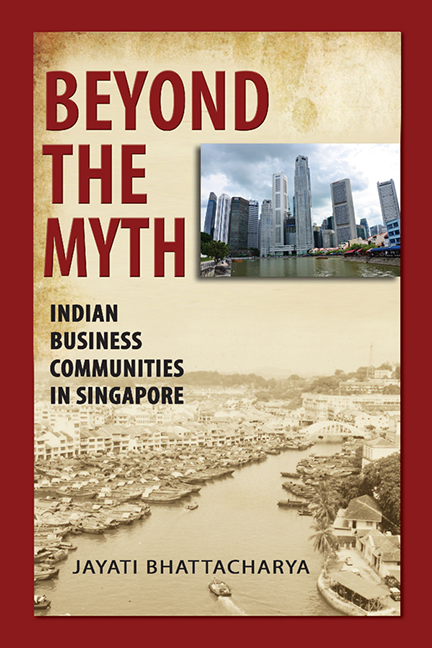Book contents
- Frontmatter
- Dedication
- Contents
- List of Map, Tables and Figures
- Message by Mr R. Narayanmohan
- Foreword by Professor Tan Tai Yong
- Message by Ambassador K. Kesavapany
- Acknowledgements
- List of Abbreviations
- Introduction
- PART ONE
- PART TWO
- Chapter Four Business Associations and Organizational Networks
- Chapter Five The Indomitable Entrepreneurs: Three Case Studies
- Conclusion: Surging Forward
- Appendices
- Select Bibliography
- Index
- About the Author
Chapter Four - Business Associations and Organizational Networks
from PART TWO
Published online by Cambridge University Press: 21 October 2015
- Frontmatter
- Dedication
- Contents
- List of Map, Tables and Figures
- Message by Mr R. Narayanmohan
- Foreword by Professor Tan Tai Yong
- Message by Ambassador K. Kesavapany
- Acknowledgements
- List of Abbreviations
- Introduction
- PART ONE
- PART TWO
- Chapter Four Business Associations and Organizational Networks
- Chapter Five The Indomitable Entrepreneurs: Three Case Studies
- Conclusion: Surging Forward
- Appendices
- Select Bibliography
- Index
- About the Author
Summary
Organizations and associations of merchants’ bodies must have existed as long as the inception of the trading community, though the term “chamber of commerce” was only coined as late as the end of sixteenth century and became popular thereafter. The “merchant-guilds” and “craft-guilds”, the predecessors to the chambers of commerce, were quite common in medieval Europe as it was in early medieval India. Some names of the South Indian merchant guilds existed not only as prominent entities of trading interests, but represented complex syncretic relationships between state, guilds and religious institutions. Ancient India has also been replete with numerous examples of srenis or guilds with nexus between political authorities and the commercial interests in the parameters of the complex hierarchical occupational structures of the caste system. There are several other names denoting merchant bodies like the samuha, nigama, gana, pasanda, puga in the ancient Indian texts, but the differences between them is not very clear. Thus the essence and structure of merchant bodies was not a Western innovation, as is often believed, but readily existed in the parlance of the socio-economic structure of ancient India and continued into subsequent ages. The hereditary nature of profession in Indian guilds differed from the European guilds, where individual preferences were given priority; nevertheless, choice of family occupations was more common. The hereditary, linguistic and regional base of the Indian merchant bodies perhaps helped them to maintain the intra-ethnic bonding of the informal commercial networks even during the colonial period parallel to the Western chambers of commerce.
The basic mission of the merchant bodies has remained the same through the times, which is to promote a conducive climate of productive and profitable business operations in the commercial interests of the community. The Chambers of Commerce eventually evolved as a common protection group to govern conduct of trade for specific mercantile interests as well as influence legislation of respective governments or act as pressure groups to benefit their trade and commerce. This chapter focuses on the evolution of different business organizations and associations in Singapore, especially those emerging out of ethnic Indian bodies, through the colonial times into the present generation of several networking groups and analyses their contribution to the commercial community in different phases of history.
- Type
- Chapter
- Information
- Beyond the MythIndian Business Communities in Singapore, pp. 199 - 254Publisher: ISEAS–Yusof Ishak InstitutePrint publication year: 2011



